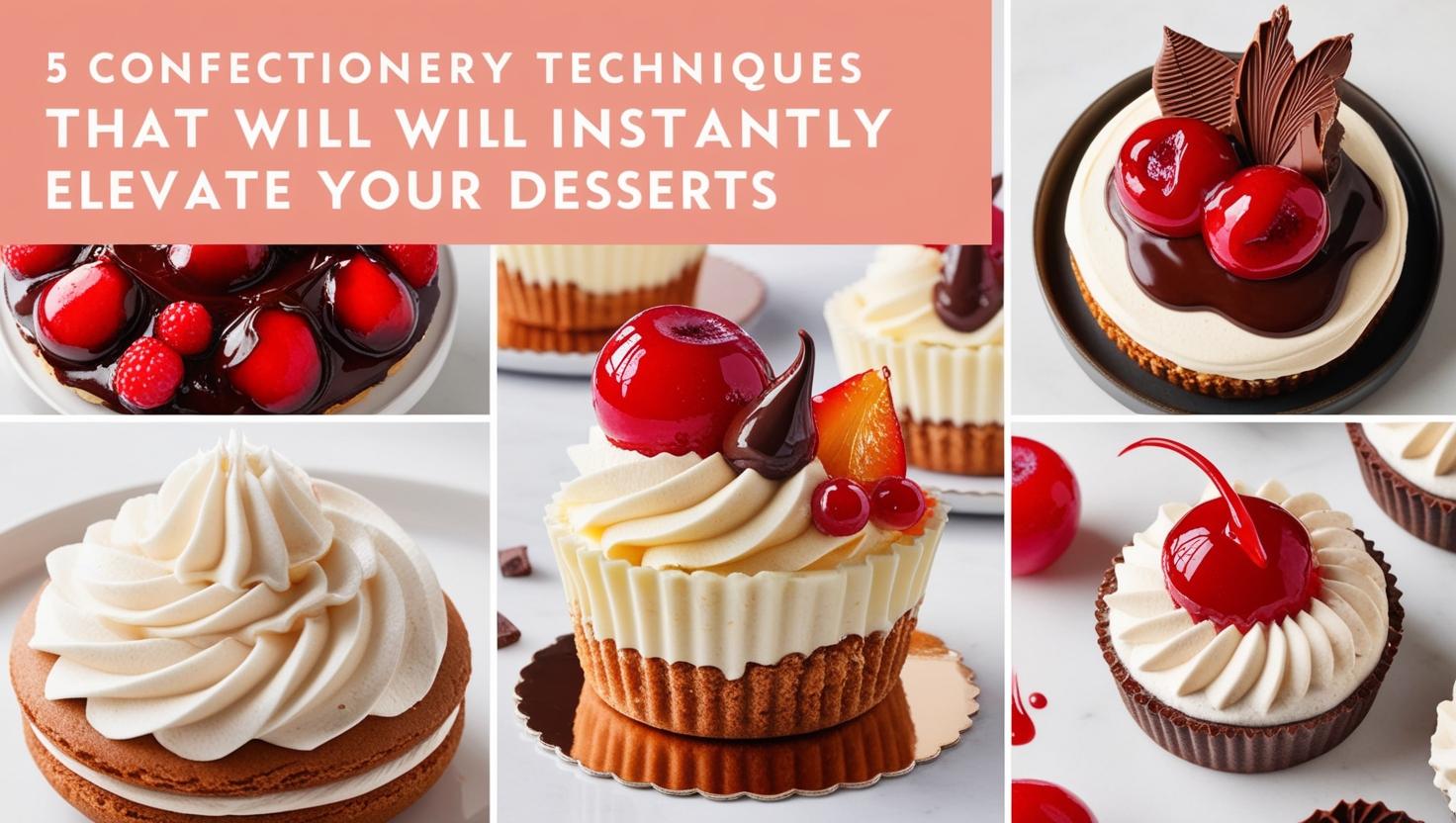Making delicious desserts is great — but making them look stunning and feel like they came from a professional bakery? That’s where confectionery techniques come in.
Whether you’re baking for guests, social media, or simply to treat yourself, these 5 simple yet powerful confectionery techniques will take your sweets from homemade to high-end.
1. Piping Like a Pro
Piping isn’t just for fancy cakes — it can turn cupcakes, cookies, tarts, and even mousses into beautiful creations.
What you need:
- Piping bags (disposable or reusable)
- A set of piping tips (start with round, star, and petal tips)
Tips for success:
- Use buttercream or whipped ganache for best control
- Hold the bag at a 45° angle
- Apply consistent pressure and let the tip do the work
- Practice on parchment paper before going to your dessert
Where to use it:
- Swirls on cupcakes
- Rosettes on sheet cakes
- Decorative dots on tarts or plates
💡 Even simple piped borders can instantly elevate presentation.
2. Tempering Chocolate (Without the Stress)
Tempering is the process of melting and cooling chocolate in a way that gives it a glossy finish, firm snap, and professional look.
Why it matters:
Tempered chocolate doesn’t melt on your fingers easily and is perfect for:
- Dipping strawberries, cookies, or truffles
- Making chocolate decorations or shards
- Coating bonbons or candy bars
Simple microwave method:
- Chop high-quality chocolate.
- Microwave 2/3 of it in 20-second bursts until melted.
- Stir in the remaining 1/3 (finely chopped) and mix until smooth.
This cools the chocolate and aligns the crystals — no thermometer needed!
3. Using Edible Gold, Flowers, and Dusts
A little sparkle or nature-inspired touch goes a long way. Here’s how to use edible decorations safely and beautifully.
Ideas:
- Edible gold leaf or gold dust: Adds elegance to chocolates, macarons, and cakes
- Edible flowers (like pansies, violets, marigolds): Great on cupcakes and tarts
- Luster dusts: Brush over fondant or chocolate for a subtle shine
Tips:
- Make sure decorations are labeled 100% edible, not just “non-toxic”
- Use tweezers for precise placement
- Store gold leaf in a dry area and apply with a soft brush
This technique is all about turning simple desserts into showpieces.
4. Creating Layers and Textures
Desserts that look interesting and feel amazing in the mouth are all about contrast — between soft and crunchy, sweet and tangy, smooth and airy.
How to apply it:
- Add a crunchy layer (cookie crust, chopped nuts, brittle) to creamy desserts
- Use layers of mousse, cake, and jam for mini cakes or verrines
- Top puddings with whipped cream and a crisp garnish like caramel shards
Visually, layers are appealing — and texturally, they keep each bite exciting.
💡 Even simple trifles or parfaits become stunning when layered in clear glasses.
5. Glazing and Mirror Glaze Techniques
A shiny glaze can turn a simple cake or mousse into a bakery-quality dessert.
Basic chocolate glaze:
- Heat cream and pour over chopped chocolate.
- Stir until smooth, let cool slightly, then pour over a chilled cake.
Mirror glaze (advanced but doable):
- Combine sweetened condensed milk, white chocolate, gelatin, and glucose syrup.
- Color with food gel, strain, and pour over a frozen mousse cake.
Tips:
- Always glaze over cold or frozen surfaces
- Use a cooling rack and tray to catch excess
- Glaze in one smooth pour — no back-and-forth
A good glaze is eye-catching and signals a professional touch.
Final Thought: Master the Little Things, Impress in Big Ways
You don’t need to be a pastry chef to make beautiful desserts — just someone who’s willing to practice and try something new. These 5 confectionery techniques are not only beginner-friendly, but they also deliver wow-factor results with minimal equipment.
So the next time you bake, try adding a piped swirl, a shiny chocolate glaze, or an edible flower. You’ll be amazed how much it transforms the final look (and feel) of your dessert.
Because in the world of sweets, it’s all about the details 🍰✨
